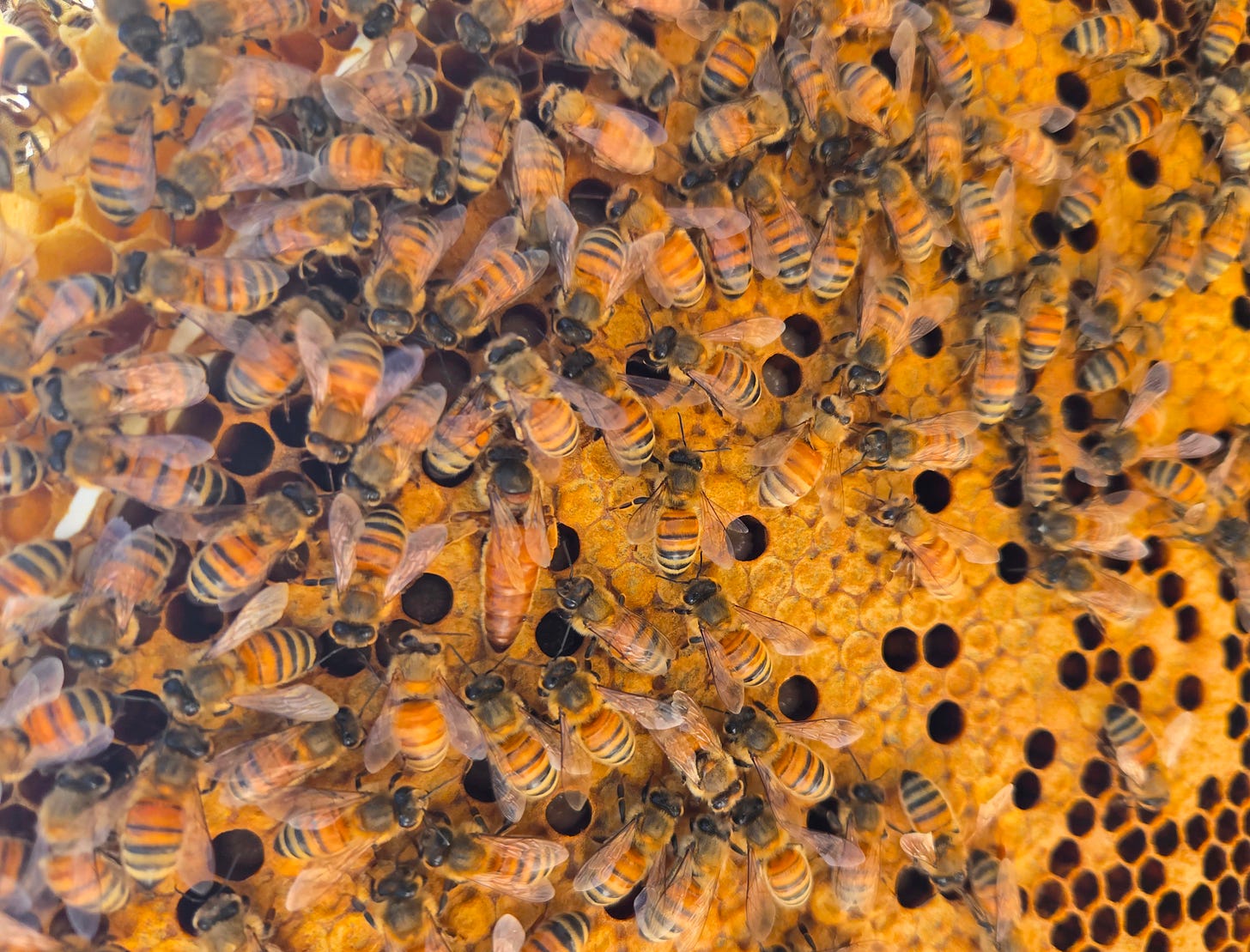Have you ever heard an alpaca scream?
It’s pleasant, right?
Alpacas are quiet creatures, but they make this sound when they are on high alert. It happens so seldom that I felt lucky to record it. You might wonder what I did to elicit that response.
A few weeks ago, after our alpacas had some visitors and I recounted, yet again, how I get all the attitude while they are so sweet for everyone else, I had an epiphany. I came inside and told Julio, “The alpacas treat me like they treat each other.”
“You’re like part of the herd,” he confirmed.
Actually, I think that is overstating the case. They for sure do not see me as part of the herd. They do not watch my back, and they track my movements like they do with any other outsider. But they do treat me with more familiarity and therefore more spit than they do anyone else. I try not to take it too personally.
Halter Training
The alpacas need remedial halter training. We do not take our alpacas to shows, and they do not need to be haltered for shearing. They also have had blessedly little need for vet visits. But in case of an emergency, I would like them to remember what a halter is. And, I think it would be fun to show Nell eventually, so she needs to learn, too.
Getting the halter on a resistant alpaca is a bit tricky, but I like to hold them gently by their long neck and give them a little cuddle first, if they let me. There is a part of the alpaca’s nose that is softer cartilage; you have to make sure you don’t position the halter there, or you could cut off her ability to breathe. Our alpacas are also so fluffy right now that the halters are too snug, so I am not yet fully buckling them until after shearing.
I did not expect this process to go smoothly, but I learned something important. Really, the worst that can happen is that I get spit at. I hate it, but it’s not that big of a deal.
I feel like, subconsciously, I am always bracing against the alpacas spitting at me. They jerk their chins at me and huff a lot, and they get away with it.
It’s important that you know that alpaca spit smells really terrible. They are modified ruminants, so they bring up semi-digested hay to spit at you and the smell is something I can’t really compare to anything else. It’s a spicy, bile-y, lingering odor. Years ago, I bent down to say good morning to Miss Firecracker and she spat one puff of hay right in my face. The smell got up into my sinuses, and I had to dash back to the house, gagging, so I could wash my face a dozen or so times. I think it got in my head a little.
I managed to get Clementine on the halter, and she seemed pretty confused, but she walked around the pasture with me for a few minutes. Then, I tried to halter Nell and Miss Firecracker spat all over me.
I got frustrated and turned to leave. Then I realized that was the worst that she could do. It had happened. So, I took off my glasses, which were soaked in green goo, and I said, “Too bad, lady, you used your one trick and we’re still going to practice this.” Somehow, my stubbornness overtook hers, and I got her on a halter.
Then she screamed at me.
Miss Firecracker is still holding a grudge, but I’m continuing to practice with Clementine in hopes that repeated exposures make the process easier for everyone. Fingers crossed that after shearing day, I can share an update on how well trained we all are.
In Other News
Last week, I had an essay at Longreads: “In Defense of Spiders.” I know I am not supposed to pick favorites, but it is one of my favorite things I have written in a while, and I had a wonderful experience working with a Longreads editor, Krista, to weave together the threads about creativity, self-censorship, and empathy. I am so happy to have this piece of writing out in the world.
I also got to do my first full hive inspection of the year. Entering my fifth year with this colony, their cluster size is the smallest I have ever seen. I have, due to one calamity or another, usually combined two hives before winter, so that is a factor I’m sure. It was also a hard winter for bees. The Bee & Bee is currently only using three frames out of a double deep with one super on. That is a lot of empty space! But they have a bit of honey yet, and the brood pattern is compact, and there were a lot of capped cells, so the population should start ramping up soon. I even got to see the queen lay an egg.
I’m calling this one Queen Persephone. Persephone is the goddess of spring and the queen of the underworld. Seems to fit the vibe right now. But also, one of my favorite chickens was named Persephone, may she rest in peace. Queen Persephone of the Bee & Bee is a big, beautiful girl. Here’s hoping that she lays a ton of eggs.

As this newsletter grows, I hope to do some collaborations. I want to do a series of interviews with people who run small farms, but I also would love to run some guest posts from other people already in this space. If you are interested in collaborating, please reach out.



